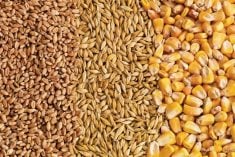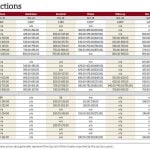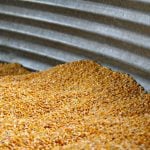Winnipeg, Jan. 8 – U.S. wheat futures hit contract lows over the past week, before seeing a short-covering correction in recent days.
However, with ample world supplies and poor export demand, the path of least resistance likely remains lower, market participants say.
The fundamentals are bearish for wheat, but the market structure looks more bullish, with a lot of managed money already on the short side, said Adam Knosalla, a broker with Frontier Futures in Minneapolis.
“It feels like nobody wants to push it too much lower ahead of the (USDA) report next week,” he said of wheat’s strength in the last few days. The USDA will release several reports on Jan. 12, including U.S. quarterly grain stocks, winter wheat planted acreage and the monthly supply and demand update.
Read Also

Canadian trade data delayed by U.S. government shutdown
Canadian international trade data for September will be delayed indefinitely due to the ongoing partial shutdown of the United States government, Statistics Canada said Friday, Oct. 24.
However, while participants were covering shorts ahead of the reports, Knosalla expected the downward slide would continue after the USDA data.
“Unless something somewhere in the world changes … there’s not much to be bullish about, other than hoping for a short-covering rally,” he said.
“Rallies (in wheat) will be limited by large supplies and poor U.S. exports,” added Terry Reilly, of Futures International in Chicago.
CBOT March wheat hit a contract low of US$4.56 per bushel on Jan. 4, but was about twenty cents above that support level by Friday, Jan. 8. However, with the fundamentals still relatively bearish, both analysts were of the opinion that new contract lows were more likely than a prolonged short-covering bounce.
“We have more downside momentum,” said Reilly, adding that “wheat could still take another 25 to 30 cents out of the market.”
Knosalla noted that while all three U.S. wheat markets are seeing similar activity, any surprises in the winter wheat seedings numbers out on Jan. 12 could lead to some divergence.
He said spring weather conditions in the Northern Hemisphere could also provide the catalyst for some fundamental strength in wheat, if any problems materialize.














